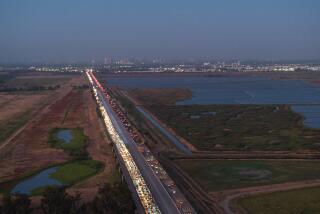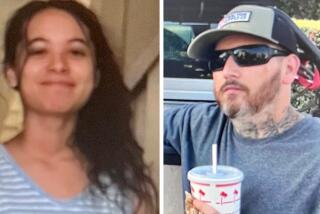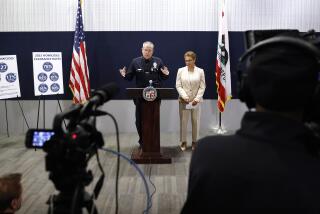By releasing video for police shooting, Fresno chief break ranks with other departments

Warning: Video has graphic content. Body-camera footage released by the Fresno Police Dept. shows the June 25 shooting of Dylan Noble.
By releasing police body camera footage of a controversial shooting, Fresno’s police chief has gotten in the middle of a fierce debate about whether the public should have access to these videos.
Law enforcement agencies across the nation are equipping their officers with body cameras in an effort to have a record of their interactions with the public. The body camera trend picked up steam in the wake of the much-debated shooting of a black teenager in Ferguson, Mo., two years ago.
The Los Angeles Police Department plans to have most of its officers equipped with body cameras soon. But like many agencies, the LAPD does not plan to routinely release those videos to the public.
Why did Fresno release the video?
Chief Jerry Dyer said at a news conference that he decided to release the graphic videos of officers firing four gunshots into Dylan Noble, a white 19-year-old, because of the intense public interest in the shooting.
Dyer acknowledged that the footage is “extremely disturbing” to watch, but he said he hoped it would clarify what led officers to stop Noble on June 25 and eventually open fire.
“I anticipate that some of this video will answer many of the questions out there in this community,” Dyer said. “However, I believe this video is also going to raise questions in the minds of people, just as those questions exist in my mind as well.”
What did the video show?
The video shows officers spotting Noble’s black pickup and pursuing the truck with police sirens blaring. Dyer said officers had been responding to a report of a man armed with a rifle.
As soon as Noble’s truck is parked, an officer is heard yelling: “Turn off the truck. Get your hands out the window. Both hands out the window.” Later, an officer screams: “Let me see both your hands. … Get both your hands out.”
Noble exited the truck and approached, then retreated from the officers.
Police called for backup, and officers gave about 30 commands for Noble to show his hands, lift his hands or lie on the ground, Dyer said.
Noble did not comply with officers’ orders and turned around to face them. He reached his right hand behind his back and appeared to carry an object in his right hand that officers believed could be a weapon, Dyer said.
Noble is heard saying that he hates his life.
One officer shoots him twice. Noble falls to the ground, rolls over and is seen moving his hand into his waistband and under his shirt. The officer fires a third round at Noble, and after about 12 seconds, another officer fires a fourth bullet into the man.
The object in Noble’s hand was determined to be a 4-inch plastic container with malleable clay.
Why do departments oppose releasing body camera videos?
They generally cite issues of privacy for both the officers and those with whom they come in contact.
LAPD Chief Charlie Beck has said he did not expect to disclose footage in the majority of cases.
In an interview last year, Beck explained his concerns.
Beck said the cameras still would bring transparency, even if the public lacked access to all footage. He noted the LAPD’s civilian overseers — the Police Commission and inspector general, along with the district and city attorneys’ offices — would have the authority to review the recordings.
“I think people misunderstand transparency as having everybody and all the public have access to everything. And it isn’t so much that as having the ability for oversight by multiple entities outside of the Police Department,” Beck said. “I think that’s the meaning of transparency. I don’t think that transparency means we post every interaction on YouTube.”
The chief said he felt there was a “moral prohibition” as well.
“People invite us into their homes on their worst possible day, and I don’t think they invite us with the intention of having that interaction made public,” he said. “Families call us when they’re in crisis. Victims call us when they’ve had horrific things done to them by evil people. And to make those things public revictimizes them, doesn’t serve justice. And I don’t think it’s the right thing to do.”
What do critics say?
The American Civil Liberties Union has urged federal officials not to give the department money to buy more of the devices, citing a lack of transparency.
“We believe that the LAPD’s policy does not promote — and in fact undermines — the goals of transparency, accountability and creation of public trust that body-worn cameras should serve,” the organization wrote last year.
Peter Bibring, an attorney for the ACLU, applauded Dyer’s decision to show the public the video from the Fresno officers’ body cameras.
“This shows departments can release video footage less than three weeks after a fatal shooting as a way to lend transparency,” Bibring said.
At two community meetings in Los Angeles last year on the body camera issue, police commissioners and top brass heard from residents who questioned why the public would not get to see the footage. Many said that by withholding the recordings from the public, the department would undermine the transparency and officer accountability touted by proponents.
What’s next in Fresno?
Dyer declined to offer an opinion about whether the shooting and conduct of the officers aligned with department policy. He said he is waiting for the conclusion of an internal investigation as well as one by the Fresno County district attorney’s office.
The prosecutors’ investigation is expected to conclude by late August. The FBI and the U.S. attorney general’s office also have agreed to investigate the shooting.
ALSO
Man arrested after chase and standoff in Corona
Friend of teen killed by CHP accused of making threats against officer who opened fire
Black Lives Matter demonstrators rope off LAPD HQ with crime scene tape after City Hall sit-in
UPDATES:
10:15 a.m.: This article was updated with a final question at end of story.
This article was originally published at 7:48 a.m.
More to Read
Sign up for Essential California
The most important California stories and recommendations in your inbox every morning.
You may occasionally receive promotional content from the Los Angeles Times.












